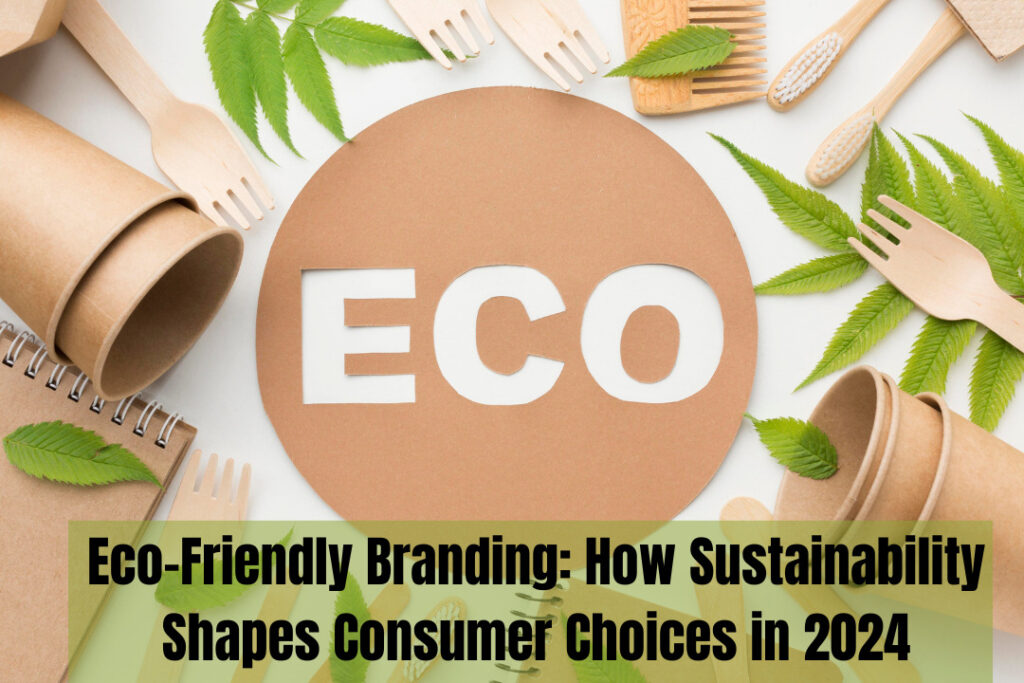It is no longer a buzzword but a value. That one thing which, in constantly changing marketplaces, molds consumer choice as we take 2024 on and off. Nothing could go any better than green branding being taken up by a company to work as a step forward for the company in this world for a green-conscious customer who has been faced with the severe reality of climate change, environmental degradation among many things in this world. Sustainability does, therefore, cement a business as building not only a much greater brand but also securing earth with practice.
This section talks about the current relevance of green branding as practiced across a world in terms of changing consumer behavior and how business effectively integrate sustainability into a strategy.
Table of Contents
Emergence of Green Branding
Green branding is where factors are either environment friendly and responsible towards the environment come together. It, in simple words, means little carbon footprint, wastes it produces, and ethical productions are put into the venture.
This trend has very many reasons:
- Consumer Awareness: The new-age consumer, mainly the Millennials and Gen Z, are aware of concerns for the environment. According to the Nielsen survey, 73% of global consumers look forward to changing the pattern of consumption to curb environmental deterioration.
- Governmental pressures: The stringent environment rules imposed by the various governments of the countries compel companies to switch to greener options.
- Competitive Advantage: Sustainability leaders have enormous competitive advantages; consumers want to associate themselves with the cause.
Why Sustainability Matters to Consumers
1. Ethical Alignment
Consumer is now seeking a brand that possesses its kind of values. Environment-friendly brands show concern for society and care to take into it. So a consumption-concerned customer is highly vigilant regarding such facts.
2. Health and Safety
Only the sustainable products look healthier and safer. That is indeed the feeling that most resonates with the food, cosmetic as well as the fashion industry. Not unknown anymore when health-conscious people require organic production and toxin-free skincare as they place top priority on health care.
3. Transparency and Trust
Transparency would be the new norm for consumer trust by 2024. The more a brand could speak transparently on the topics of sustainability such as sourcing, production or packaging, it would have a better chance at earning consumer loyalty.
Read more: Eco-Friendly Branding: How Sustainability Shapes ConsumerPAN 2.0: A Giant Leap to Modernise Identification in India
Atal Innovation Mission 2.0: India to be Global Innovation Hub by 2028
Eco-Friendly Branding Impact on Consumer Choice
Eco-friendly branding offers much scope to affect buyer choice.
Reasons:
1. Willing to Pay Premium
Now some customers will pay more for ‘eco-friendly’ products because they feel that these are so much better and it will be a reflection of their self.
2. Brand Loyalty
Customers would be loyal to a brand which takes its sustainability seriously; this may lead to good word-of-mouth and advocacy that will propel the growth of the brand.
3. Social Influence
Sustainability is the new status symbol. Social media makes going green a reason to post those purchases online just so peers are as inspired.
4. More Tolerance for Greenwashing
It’s going to flip the marketer on their head. A smarter, better-educated consumer probes brands much closer and looks for good-faith efforts.
Case Studies: The Eco-Friendly Brands Making Things Hot
1. Patagonia
For Patagonia, it advocates for environmental sustainability and conservation efforts but still utilizes recyclable material, having its “Worn Wear” reuse program for its products.
2. IKEA
It uses renewable and recycled materials. It sells solar panels and plans to be a totally circular business by 2030.
3. Beyond Meat
This food business specializes in the manufacturing of plant-based products. A segment that attracted a green-conscious customer who would look for meat-based alternatives to help him or herself reduce their greenhouse gas emission.
Sustainable Branding Strategies
To reach out to sustainability in 2024 consider
1. Resource-use is sustainable from biodegradable, recyclable, and renewable origin-based products. Such as compostable packaging or minimal plastic usage.
2. Implementation of circular economy
Design for longevity and reusability: provide options of repair or recycle centres or incentives that bring back used products
3. Sustainability Certifications
Utilize fair trade organic or LEED; the sense of consumer trust is that your brand is the best among the rest
4. Green Marketing Investment
Bring focus to your advertisements, packages, and your social media sites by showing sustainability efforts in your business.
Educate consumers on the goodness that the brand contributes to the environment.
5. Partnership with a non-profit Organization
Partner with a nonprofit organisation engaged in afforestation, ocean cleanup, or endangered species.
6. Measure and Report Impact
Measure your sustainability metrics like carbon emissions, waste reduction, or water conservation, and share it with your audience in a very transparent manner.
Challenges in Eco-Friendly Branding
Benefits are tremendous but it’s not a piece of cake turning into an eco-friendly brand
- Sunk Cost: The Green materials and processes are pretty costly to start but generally would be less expensive in the long haul.
- Loss of Consumer Confidence: Dreadful lot of green washing had to go on. Consumers will always have to be kept confident through good fair and transparent efforts, but it is a given.
- Sophistication in supply Chain: Being green in totality can be a big pain to manage through international supply chains, but bottom-line, it is must of the reality.
Future of Sustainability in Branding
As we enter 2024, the future of green branding looks bright and full of hope. It ranges from innovation in green technology to increased demand by consumers for greater transparency to governmental incentives towards sustainability-practicing- everything seems to be shaping up and going well.
Some of the trends that emerged include;
1. Carbon Neutral Promises
They promise to achieve carbon neutrality through offsetting the emission and investing in renewable energy.
2. Regenerative Practices
Besides sustainability, the company has also been involved in other regenerative practices that heal the environment. This includes:
- Regenerative farming
- Restoration of habitats
- Other practices
3. Digital Sustainability
As companies continue to conduct more of their business online, companies continue to search for ways where its internet business is nontoxic by permitting open-minded shipping options and engaging in hosting.
Eco-friendly branding has now become not an option but a compulsion for those businesses that are going to be successful in the year 2024. This way of branding managed to satisfy the changed consumer preference as a conscious buyer and better environment for mankind to survive.
On the other hand, laggards will be few, as the ethical consumer continues seeking the honest, fair-trade, and eco-green brand. Loyalties and market shares are contributions in cash that will forever outweigh the adopter in heritage and goodwill.
The thing is that being ecobliging is not beneficial for Mother Earth; but highly good business for the future.


